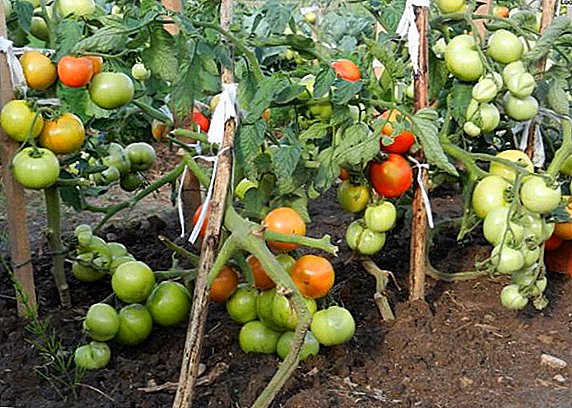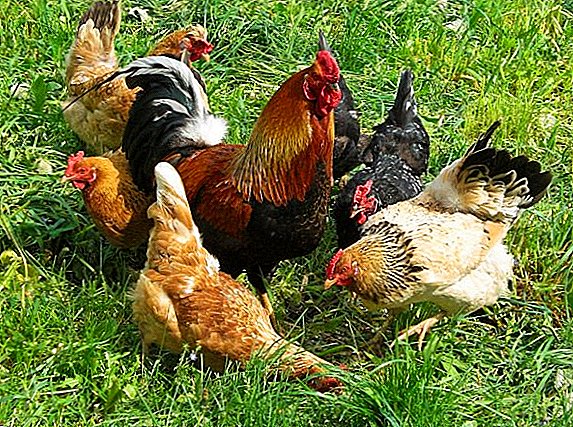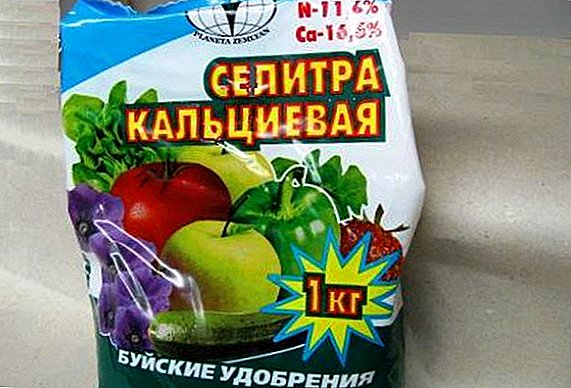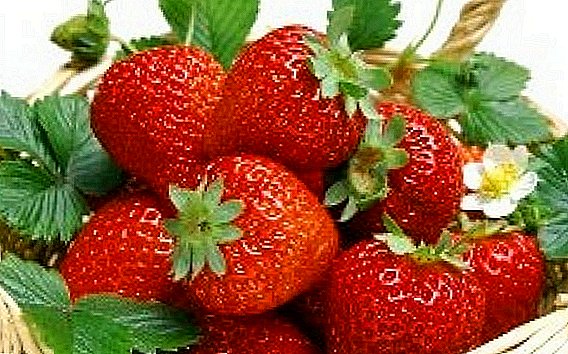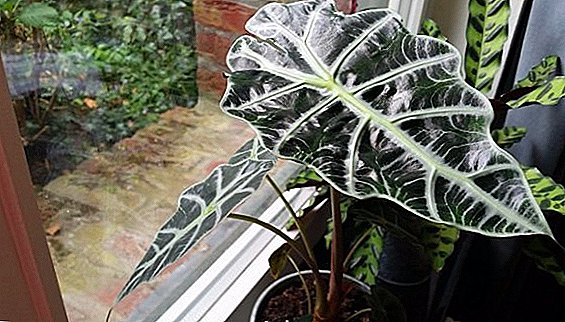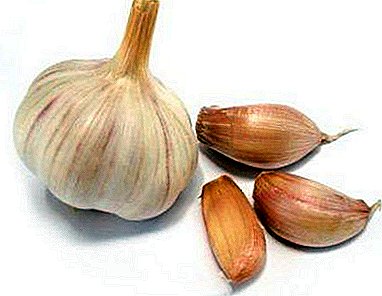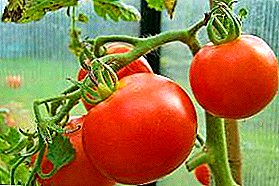 The scope of some spices is similar. But do we use such familiar dill and parsley correctly? About the fact that of them is more useful and what vitamins they contain, read in this review.
The scope of some spices is similar. But do we use such familiar dill and parsley correctly? About the fact that of them is more useful and what vitamins they contain, read in this review.
Characteristics of plants
Dill is a grassy annual of the Umbrella family. The Latin name for this herb is Anéthum. It is found as a cultivated and weedy plant on all continents. Mostly grows in sunny areas.
Characteristics of dill:
- height - 40-60 cm;
- stems - straight, thin, hollow inside;
- leaves - dissected, 10-20 cm long;
- flowers - white or yellow, gathered in umbrellas;
- umbrella diameter - 2-9 cm;
- seeds - straight, slightly curved, with a ribbed surface, 4-5 mm long.

In cooking, the leaves and seeds are used as seasoning and additive in marinades. For winter consumption, greens are frozen, dried or sealed with salt. The taste of dill is usually described as soft and warm, with a faint aroma of anise, and the leaves have a milder taste than the seeds. If the grains are roasted, the taste will become deeper and nutty. From the seeds, oil is obtained, which is used to produce cosmetics based on it, creams, tonics. It is also an ingredient for the production of soap as a flavoring.
Did you know? The origin of the word "dill" in English is associated with the Norwegian verb dilla - put to sleep This is one of the properties of the plant. - have a calming effect.
Parsley (Petroselinum crispum) is a herbaceous biennial from the Umbrella family. It resembles cilantro, but is just a similar plant. It is grown for the sake of leaves, which are used as culinary seasoning. Cultivated on all continents.
Characteristics of parsley:
- height - 30-100 cm;
- stems - straight, branched, hollow inside;
- leaves are pinnately dissected, triangular in shape;
- flowers - yellow-green, collected in umbrellas;
- umbrella diameter - 2-5 cm;
- seeds - oblong, egg-shaped.

In the first year, it forms a rosette of leaves with a length of 10-25 cm, and in the second year it forms a taproot. Fresh leaves are commonly used as a side dish. The root crop of some varieties is edible and can be eaten as a vegetable. Breeders also deduced different plant varieties - for the production of root crops and for the production of greenery. Essential oil derived from flowers, used as a flavoring in the cosmetic industry.
Dill is considered the most famous spice in the CIS. It is low-calorie (43 kcal), but at the same time it has a wide profile of phytonutrites, comparable to high-calorie food sources, such as nuts, legumes, cereals or meat. Parsley has only 36 calories, and it has an even richer profile of phytonutrites.
Did you know? Some historians believe that we owe the spread of parsley in Europe to Charles the Great, the emperor of the Holy Roman Empire. He loved this spice so much that he took it with him, and his chefs grew parsley wherever the emperor traveled.
As a source of minerals, dill is less useful than parsley, despite the fact that it contains a fairly large set of minerals. Copper is involved in the process of blood formation and the development of enzymes important for health, but it is only 1% of the daily norm in the plant. In the green dill there is zinc. It regulates the growth and development of the organism, as well as the processes of digestion and the synthesis of nucleic acids. But its amount (1%) also does not have a significant effect on your daily ration of vitamins.

Parsley is also a good source of minerals. 100 g of fresh grass provides 554 mg or 12% of the daily intake of potassium. It is the main component of cellular fluids and a participant in intracellular and intercellular metabolism. Potassium helps control heart rate and blood pressure by counteracting sodium pressure. The iron contained in parsley is essential for blood formation.
The mineral composition of plants, specified in mg /% of the daily value (RDA):
| Minerals | Dill | Parsley |
| Iron | 0.6 mg / 3% | 3.7 mg / 21% |
| Magnesium | 4.8 mg / 1% | 30 mg / 7% |
| Manganese | 0.1 mg / 6% | 0.1 mg / 5% |
| Calcium | 18.2 mg / 2% | 82.8 mg / 8% |
| Phosphorus | 5.8 mg / 1% | 348 mg / 3% |
| Zinc | 0.1 mg / 1% | 0.6 mg / 4% |
| Potassium | 64.6 mg / 2% | 332 mg / 9% |
| Sodium | 5.3 mg / 0% | 33.6 mg / 1% |
| Copper | 0.01 mg / 1% | 0.1 mg / 4% |
| Selenium | - | 0.1 µg / 0% |
Dill contains many chemical compounds of plant origin, which have antioxidant properties and promote health. It has no cholesterol, and it contains very few calories. It also has a large amount of vitamins, such as niacin, pyridoxine and other dietary fibers, which help control blood cholesterol levels.

Vitamin A and β-carotene are natural flavonoid antioxidants. In the green dill their 257% of the recommended daily intake. Vitamin A is involved in maintaining the health of the mucous membranes, skin and to maintain good vision. Fresh greens contain 140% vitamin C. It provides the body with resistance to infectious agents, reduces inflammation and has a beneficial effect on the immune system.
Did you know? The remains of dill were found in the Swiss Neolithic settlements, dating back to 400 BC. er
Parsley is the richest plant source of vitamin K. Here it is 1366% of the recommended daily intake. Vitamin K is essential for healthy bones and joints. It is also involved in the treatment of Alzheimer's patients, as it can limit the damage to neurons in the brain.
Vitamin composition of plants, specified in mg /% of the daily value (RDA):
| Vitamins | Dill | Parsley |
| A (beta carotene) | 7718 IU / 257% | 8424 IU / 281% |
| B1 (thiamine) | 0.058 mg / 5% | 0.086 mg / 7% |
| B2 (riboflavin) | 0.296 mg / 23% | 0.098 mg / 7.5% |
| B3 (niacin) | 1.570 mg / 11% | 1,331 mg / 8% |
| B4 (choline) | - | 7.7 mg |
| B5 (pantothenic acid) | 0.397 mg / 8% | 0.400 mg / 8% |
| B6 (pyridoxine) | 0.185 mg / 14% | 0.090 mg / 7% |
| B9 (folate) | 150 mcg / 37.5% | 152 µg / 38% |
| C (ascorbic acid) | 85 mg / 140% | 133 mg / 220% |
| E | - | 0.75 mg / 5% |
| TO | - | 1640 mcg / 1366% |

Calorie and nutritional value
Comparative characteristic of the nutritional value of dill and parsley:
| The nutritional value | Dill | Parsley |
| calories | 43 kcal / 2% | 36 kcal / 1.5% |
| squirrels | 3.46 g / 6% | 2.97 g / 5% |
| fats | 1.12 g / 4.5% | 0.8 g / 3% |
| carbohydrates | 7 g / 5.5% | 6.33 g / 5% |
| cellulose | 2.10 g / 5.5% | 3.3 g / 8.5% |

The benefits of dill and parsley for the body
Dill is used in the pathologies of the digestive process, including loss of appetite, bloating, flatulence, as well as liver disease and complaints of the gallbladder. It is effective in treating diseases of the urogenital system.
Did you know? The name "parsley" comes from the Greek word πετροσέλινον (petroselinon), which means stone celery, because it thrives on stony soils and rocks.
Among other reasons for the use of dill: the treatment of colds - fever, cough, bronchitis, infections. It helps with sleep disorders, convulsions and nervous system disorders, treats hemorrhoids and genital ulcers. Both dill and parsley are spices that use herbs, seeds, and the oil they produce.

The properties of each of the elements will be different, but common to the whole plant will be:
- carminative properties and improved intestinal health;
- antioxidant properties and general improvement of the state of all body systems;
- antimicrobial properties and the prevention of infectious diseases;
- analgesic and antidepressant properties.
Dill also lowers blood cholesterol, which can improve vascular health and blood circulation, and reduce the risk of heart attack or stroke. It reduces the risk of cancer due to the activity of methanol compounds. For women, dill is useful for reducing menstrual cramps.
Important! Everyone knows the benefits of dill water for kids. It soothes the fermentation processes in the intestines. But 24 hours after cooking, the water will lose its properties and cause fermentation. Such water can not be consumed.
Emerald green parsley is popular as a means for losing weight. It helps to remove excess water from the body and reduce bloating. It is a natural diuretic that eliminates excess fluid without depleting potassium. In addition to excess fluid, parsley helps balance blood sugar levels. This important property plays a key role in preventing the degenerative effects of diabetes on the liver.
 Parsley is known for its cleansing properties, so it is taken for weight loss and elimination of toxins from the body.
Parsley is known for its cleansing properties, so it is taken for weight loss and elimination of toxins from the body.
Other useful properties of parsley:
- Reduces the risk of cancer of the breast, digestive tract, skin and prostate. It contains a large amount of flavonoids, including apigenin, which has not only anti-cancer properties, but also anti-inflammatory and antioxidant effects.
- Improves the immune system and helps her cope with allergies, autoimmune and chronic inflammatory diseases.
- Anti-inflammatory properties allow to reduce pain and swellingassociated with arthritis.
- Being a source of vitamin C, which neutralizes free radicals, parsley can participate in treatment of many diseases - from atherosclerosis, diabetes and colon cancer to asthma.
- She is good source of one of the most important vitamins of group B - folic acid. This vitamin keeps your blood vessels healthy by reducing the risk of heart attack and stroke.
Oral parsley is used for urinary tract infections, kidney stones, gastrointestinal disorders, constipation, diabetes, cough, asthma, and high blood pressure. It will also be used to treat cracked skin, bruises, tumors, insect bites, as well as to stimulate hair growth.
Did you know? The early Greeks made parsley wreaths in order to honor the winners of the Nemensky and Istmiisky sports games, just as later winners of the Olympic Games were awarded with laurel wreaths.
Choosing quality products
When buying dill or parsley, pay attention to the following:
- the greens should be bright and fresh cut;
- make sure that the branches are not damaged and there are no pests on them - aphids and other insects.
 Special containers for storing herbs in the refrigerator, you can buy in any specialized store
Special containers for storing herbs in the refrigerator, you can buy in any specialized store
Use of parsley and dill
We often use seeds and greens in food — plant sprigs, not knowing whether it is possible to eat stems. They are as edible as the leaves, but because of the stiffness they try to eat less. In addition, parsley in the food use the root.
Due to its unique taste, dill and parsley are useful as a side dish, decoration and a component of salads. A small sprig of dill will add flavor to any dish. Greens are also used in cold soups and sauces.
Important! Not all umbrellas are safe. Hemlock - also a member of this family, and it is extremely poisonous. Parsley is also dangerous in large quantities. - it can cause abortion in its early stages.
In cooking
For many, dill is a spice that is needed when pickling cucumbers.
It really does apply in marinades, but it has other uses:
- perfectly complements potato dishes, including mashed potatoes and fried potatoes;
- fresh dill leaves are excellent in salmon, trout or cod garnish;
- fennel seeds are necessary for the preparation of seafood sauces;
- greens will give spice to rice dishes;
- The leaves of the plant can decorate an omelet or salad.
Parsley is also used in cooking as an ingredient in sauces, seasonings for pasta and additions to side dishes. It will also add extra flavor to chicken, meat or fish dishes. Both plants in the dishes can be supplemented with green onions.

In folk medicine
Because of the many side effects of synthetic products, people are increasingly turning to herbal medicine or traditional medicine recipes. Their action is based on the therapeutic effects of herbs and their combinations for the treatment of diseases.
Now many properties of medicinal herbs are confirmed by the results of scientific research. Thus, it has been experimentally established that dill reduces flatulence, eliminates spasms in the small intestine, protects the gastric mucosa from damage caused by increased acidity of gastric juice, the harmful effects of alcohol and drugs, and also has an antibacterial effect.
Did you know? Dill affects the reproductive system of men as an aphrodisiac and natural contraceptive. For women, it is used to regulate the menstrual cycle.
Dill affects the nervous system, protecting it from lung cognitive disorders resulting from aging or the early stages of Alzheimer's disease. It also improves memory and reduces stress and can be used in the treatment of epilepsy.
Traditional medicine uses dill for the treatment of the following diseases and pathological conditions:
- loss of appetite;
- inflammatory process;
- infectious infection;
- problems with the gastrointestinal tract;
- urinary tract diseases;
- convulsions;
- intestinal gas (flatulence);
- sleep disorders;
- fever;
- cold;
- cough;
- bronchitis;
- liver disease;
- problems with the gallbladder;
- sore throat.
 Often, in folk medicine, dill is used in the form of tea or decoction.
Often, in folk medicine, dill is used in the form of tea or decoction.
Scope of parsley is somewhat different from dill. It helps to restore digestion, supports the work of the liver, kidneys, spleen and adrenal glands. In addition, parsley cleanses the blood and body fluids, helps the body's defense mechanisms and inhibits the activity of bacteria and viruses. Parsley root protects the liver and helps regulate blood sugar levels. It is also great for supporting the functioning of the immune system.
We advise you to read about the properties of parsley for women's health.
In the recipes of traditional medicine, parsley is used in the treatment of:
- kidney stones;
- urinary tract infections;
- dry and damaged skin;
- bruises;
- tumors;
- insect bites;
- digestive problems;
- menstrual problems;
- liver disease;
- asthma;
- cough;
- fluid retention and excessive swelling.

In cosmetology
Dill in cosmetics can be presented in the form of an essential oil, tonic, skin cream, soap or dill water. Additionally, from the greens of dill housewife prepare cosmetic ice to moisturize the skin. All of these tools are used for skin care.
But mostly cosmetology is the scope of application of essential oils. Dill oil helps to restore the structural integrity of the skin and its elasticity.
It is used in the form of masks, which have the following properties:
- moisturize the skin;
- have antibacterial effects;
- disinfect the skin;
- relieve inflammation;
- microcracks heal;
- restore a healthy complexion.
Did you know? The ancient Greeks and Romans used dill seeds to heal wounds and strengthen immunity, while the superstitious inhabitants of Medieval Europe preferred to use it as a talisman against witchcraft or as an ingredient in love potions.In cosmetology, parsley is used in the same way as dill - to rejuvenate the skin of the face. It helps to whiten the skin, relieves inflammation and removes acne. Used in the form of tonics, masks, tinctures, decoctions and ice cubes.
Parsley is effective in combating:
- mimic wrinkles;
- uneven complexion;
- swelling;
- skin aging;
- excessive fat content.

Possible harm and contraindications
Both spices are safe if used in the quantities that are necessary for the preparation of one or another dish. They are most likely safe if you take a medicine based on them for a short period of time or in several courses with breaks in between.
Did you know? According to legend, parsley appeared where the blood of the Greek hero Armoremorus was shed when the serpents ate it.
Dill
Side Effects and Cautions for Dill:
- fresh juice can cause skin irritation;
- juice also increases skin sensitivity to sunlight, which is dangerous for people with fair skin;
- in the early stages of pregnancy, the use of seeds can trigger menstruation;
- It is forbidden to use for people with allergies to plants of the Carrot family: asafoetida, cumin, celery, coriander and fennel;
- It is recommended that people with diabetes be taken with caution - dill extract can lower blood sugar levels;
- there is a fear that dill extract may affect the regulation of blood sugar levels during and after surgery, so it should be stopped to be eaten 2 weeks before the upcoming surgery in the body.

Parsley
Side effects and cautions for eating parsley:
- may cause allergic skin reactions in people with an allergy to Umbrella: celery, cumin, parsley and other herbs;
- a large amount of parsley is harmful to those who suffer from iron deficiency (anemia) or liver and kidney diseases;
- parsley masks are not suitable for people with high sensitivity to sunlight - its use can cause a rash and increased exposure to the sun;
- unsafe when taken orally during pregnancy in large quantities - can cause miscarriage;
- can not be used by people with low blood clotting, as will increase the risk of bleeding;
- parsley can reduce blood sugar levels, therefore, taking drugs that lower sugar levels, along with parsley - you need to constantly monitor the condition of the blood;
- parsley can hold sodium, which will worsen the condition of people with high blood pressure.
The use of spices enriches our dishes. Use them on health, but remember that any spices in excessive quantities will bring not harm, but harm.


